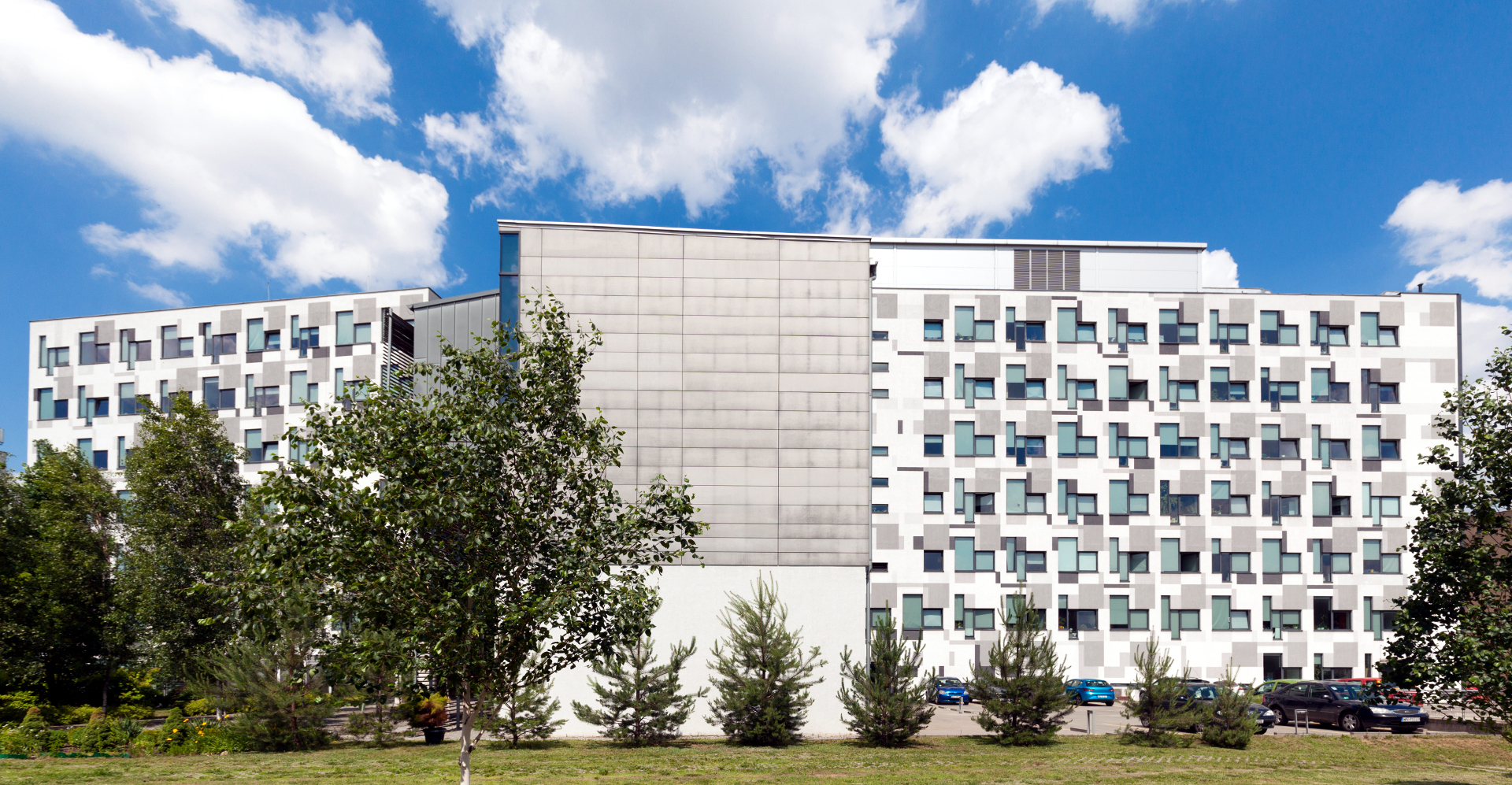About the Workshop
Dear Colleagues and Friends,
It is our pleasure to invite you to our workshop devoted to recent advances in optimization applied to engineering problems.
The purpose of this multidisciplinary event is to bring together scientists and engineers working in structural, mechanical and electrical engineering as well as mathematicians and computer scientists. The workshop will be a good opportunity to exchange experiences in the field of widely understood optimization as well as to discuss the aspects of its computer implementation.
We are looking forward to seeing you in Warsaw.
Sincerely yours,
Bartłomiej Błachowski and Piotr Tauzowski
The Organizing Committee
Book of Abstracts
Book of abstract can be download here: WEO2019_bookOfAbstracts.pdf
Image Gallery
Click on the images below:

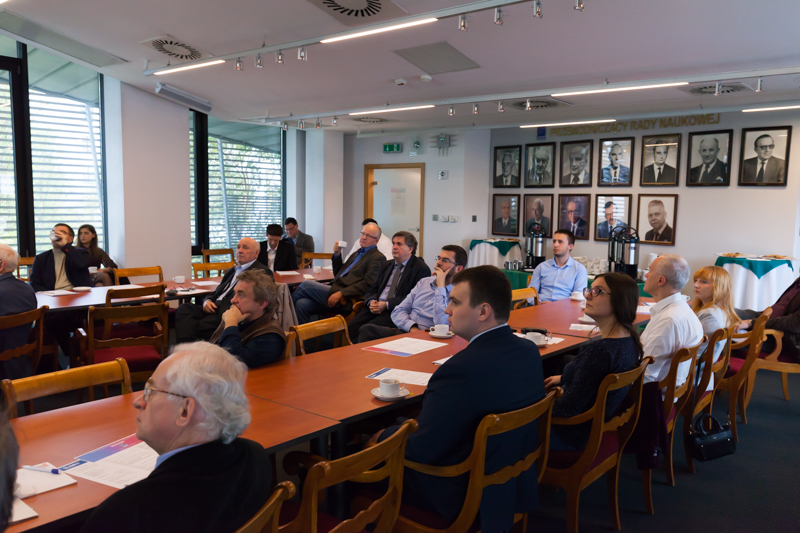


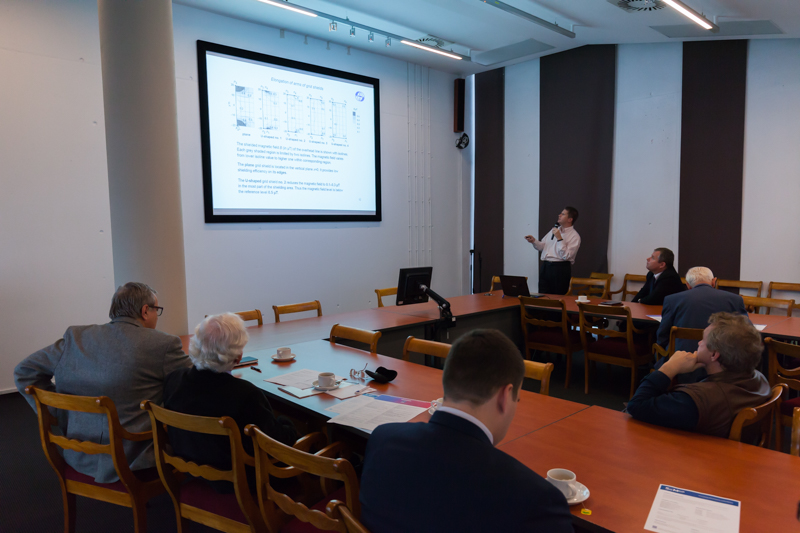
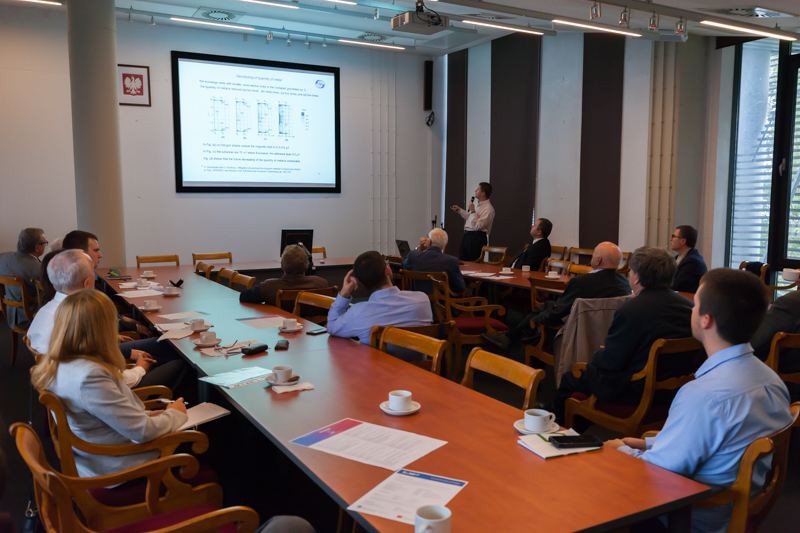
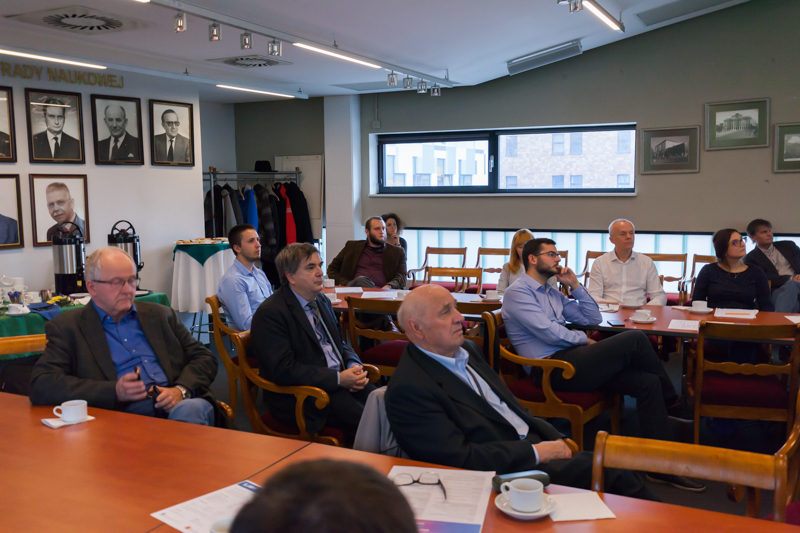

Our Speakers
The following recognized researchers have already confirmed their participation in the workshop as plenary lecturers:

Jacek Gondzio, University of Edinburgh, Scotland, UK
Interior Point Methods for Large Scale Optimization
The research interests of Professor Jacek Gondzio (School of Mathematics, Edinburgh University) include the theory and implementation of algorithms for very large-scale optimization. He is best known for his contributions in the area of interior point methods. His joint work with Andreas Grothey led to a development of the Object Oriented Parallel Solver (OOPS) which was applied in 2005 to solve a financial planning problem with more than a billion decision variables. His joint work with Kimonas Fountoulakis led to a development of efficient low-complexity methods for solving huge scale optimization problems arising in machine learning and signal/image processing. For his contributions to continuous optimization Professor Gondzio was awarded the EUROPT Fellowship in 2019. He is a Member of Editorial Boards of four leading optimization journals: Computational Optimization and Applications, Mathematical Programming Computation, Optimization Methods and Software and European Journal of Operational Research.

Volodymyr Grinchenko, Institute of Technical Problems of Magnetism NANU, Ukraine
Discrete Optimization of Grid Shield for Overhead Line Magnetic Field Mitigation
Volodymyr Grinchenko was born in Kharkiv, Ukraine, on June 21, 1986. He received the B.Sc. degree in Applied Physics and the M.Sc. degree in Theoretical Nuclear Physics from V. N. Karazin Kharkiv National University, respectively, in 2007 and 2009, and the Ph.D. degree in Theoretical Electrical Engineering from Scientific and Technical Center of Magnetism of Technical Objects of the National Academy of Sciences of Ukraine in 2013.
Since 2016 Dr. Grinchenko is a Deputy Director of Science at State Institution Institute of Technical Problems of Magnetism of the National Academy of Sciences of Ukraine
. His main research interests include electromagnetic and magnetic (magnetostatic) passive shielding, systems of active shielding, and numerical simulation methods for 3-D time-domain and frequency-domain applications.

Tomasz Lewiński, Warsaw University of Technology, Poland
Least weight structures and least compliant bodies. Optimal layout problems and recovery of underlying microstructure
Tomasz Lewiński, currently the head of the Department of Structural Mechanics and Computer Aided Engineering, Faculty of Civil Engineering, Warsaw University of Technology, is the pupil of the school of structural mechanics founded by Z.Kączkowski, Z.Mazurkiewicz and G.Jemielita (the followers of W. Nowacki) and of continuum mechanics by M.Kwieciński and W.Wojewódzki (the followers of W. Olszak). In the years 1992-1993- hosted by G.I.N.Rozvany, Essen University (Germany) as a fellow of the Alexander von Humboldt Foundation. In years 1980-2004- fostered close cooperation with J.J.Telega and his team at the Institute of Funademental Technological Research, Polish Academy of Sciences. The co-chair (jointly with A.Borkowski) of the Scientific Committee of the conference: Computer Methods in Mechanics held in 2011 in Warsaw. Since 2012- the member of the Committee of Mechanics of the Polish Academy of Sciences and the head of its Section of Computational Methods and Optimization. The member of the Editorial Boards of the journals: Structural and Multidisciplinary Optimization (Journal of ISSMO, ed. by Springer), Computer Assisted Methods in Engineering and Sciences (ed. by IPPT PAN), Periodica Polytechnica-Civil Engineering (ed. by Budapest University of Technology). The co-author of the monographs: T.Lewiński, J.J.Telega, Plates, Laminates and Shells, Asymptotic Analysis and Homogenization. World Scientific. Singapore, New Jersey, London, Hong Kong 2000. T.Lewiński, T.Sokół, C.Graczykowski, Michell Structures, Springer, Cham 2019. and co-editor of the book: G.I.N.Rozvany, T.Lewiński (Eds.), Topology Optimization in Structural and Continuum Mechanics, CISM Courses and Lectures, Springer 2014. T. Lewiński is an author and co-author of numerous papers proposing new variational settings of the problems of statics, dynamics and optimum design. These settings have been implemented in various numerical codes aimed at analysis and optimum design of solids, structures and composites. He is also the co-author of textbooks on structural mechanics (jointly with G.Dzierżanowski, K.Hetmański, Gilewski, Z.Kozyra, M.Sitek) and prepared for print the textbook on elastic shells: Z. Mazurkiewicz, Thin Elastic Shells (in Polish), Oficyna Wydawnicza PW (editions: 1995,2004).
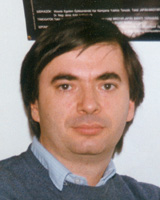
János Lógó, Budapest University of Technology and Economics, Hungary
150 years history of topology optimization
EDUCATION:
Post Graduate - Technical University of Budapest, Faculty of Civil Engineering (1986-1988)
Undergraduate - Technical University of Budapest, Faculty of Civil Engineering (1986-1988)
EXPERIENCE:
Professor, Dept. of Highway and Railway, Budapest Univ. of Techn. and Economics (2019-)
Professor, Dept. of Structural Mechanics, Budapest Univ. of Techn. and Economics (2016-)
Associate Professor, Dept. of Civil Eng. Mechanics, Technical University of Budapest (1996-2016 )
Head of Alternating Education, Budapest University of Technology and Economics (1998-2002)
Vice Dean, Faculty of Civil Eng., Technical University of Budapest (1996-97)
Course Director, English stream, Faculty of Civil Eng., Technical Univ. of Budapest (1994-97)
Assistant Professor, Dept. of Civil Eng. Mechanics, Technical Univ. of Budapest (1990- 1996)
Research Fellow, Dept. of Aerospace Eng., Univ. of Michigan, Ann Arbor, MI, USA (1990-1991)
Assistant, Dept. of Civil Eng. Mechanics, Technical University of Budapest (1988- 1990)
DEGREE:
2015 - Doctor of HAS, Hungarian Academy of Sciences
2003 - Habilitation, Budapest University of Technology and Economics
1995 - PhD,. Budapest University of Technology and Economics
1994 - Candidate of Science, Hungarian Academy of Sciences
1988 - University doctor, Faculty of Civil Eng. , Technical University of Budapest
PROFESSIONAL SOCIETIES:
Engineering Chamber, Registered Professional Engineer, Hungary, #01-1099 (1991-),
Hungarian Building Society, member, #25280 (1985-2002),
American Institute of Aeronautics and Astronautics, member #300723699 (1991-2002),
American Society of Civil Engineers, member #290274 (1991-2002),
International Society of Structural and Multidisciplinary Optimization, (1991-),
Registered Professional Architect Engineer, Hungary, #E-2 01-2995 (1985-),
Central European Association of Computational Mechanics (CEACM) (1992-).
EDITORIAL BOARD:
International Journal of Structural and Multidisciplinary Optimization (2001-),
Periodica Polytechnica-Civil Engineering, Editor-in-chief (2004-),
International Journal of Mechanics Based Design of Structures and Machines (2013-),
International Journal of Optimization in Civil Engineering (2011-),
Computers and Structures (2014-),
Advances in Engineering Software (2014-)
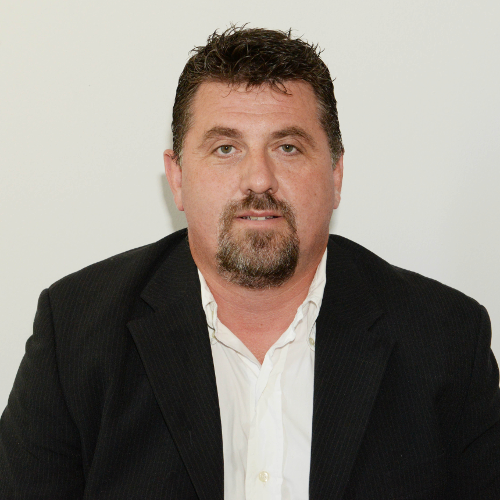
Nikos G. Pnevmatikos, University of West Attica, Greece
Optimal Seismic Design of Thin-Walled Steel Tanks
Nikos G. Pnevmatikos was born in Trikala, 8-3-1974, Greece. He obtained his diploma in 1999 and his Ph.D. in 2007, both from the Department of Civil Engineering, National Technical University of Athens, Greece. His Ph.D. thesis is entitled: Structural optimal control design of steel structures. He specialized in the field of Structural control with emphasis in Earthquake Engineering, seismic vulnerability and losses, damage detection and analysis of structure due to blast loads.
He worked 10 years as a civil engineer, at Greek Ministry of Infrastructures, Transportation and Networks specializing in design and retrofitting of concrete, masonry and steel structures damaged by natural hazard phenomena (earthquakes, floods, fires, landslides). He has been on the School of Engineering in the Department of Civil Engineering, at the University of West Attica, Greece, since January 2013, specializing in Structural Design of concrete, steel structures, bridge design and Earthquake Engineering. He is the author of a book on the Introduction to Seismic Design of Structures. He is a writer of thirty articles in scientific refereed journals and sixty articles in conference proceedings.
He is also teaching in two postgraduate programs, Seismic and energy upgrades constructions and Sustainable Development
at Department of Civil Engineering, in the University of West Attica and in Engineering Project Management
at Hellenic Open University. He is also support master thesis in postgraduate program Earthquake Engineering and Seismic Resistant Structures
at Hellenic Open University.
Prof. Pnevmatikos is a registered Civil Engineer in Greece and member of Technical Chamber of Greece. He has served as a reviewer of eight international journals and has more than 130 citations from other research groups.
Workshop Schedule
9.00-9.10
Opening
Tadeusz BurczyńskiDirector of IPPT PAN
Session I - Fundamental aspects of topology optimization
9.10-9.50
150 years history of topology optimization
János LógóBudapest University of Technology and Economics, Hungary
Abstract: It is widely known in topology optimization that the first publication is the paper of Michell in 1904. The reality is that he generalized Maxwell's work published in 1870. Also there are significant papers on the optimality criteria method what are fundamental starting point of this research field. Wasiutyński [1] formulated first in 1939 the minimum-potential criterion what plays primary importance in this field. The optimization community has almost no knowledge about the publications in topology optimization at the 50s of the past century. At this time at the Cambridge University a group of researcher (Foulkes, Cox, Hemp) published significant results what are generally not known. The design was elaborated in elastic or plastic ways and the optimized structures were trusses at the early period although this object was called frame structure. The classical solutions of the different type of plate or shell problems can be followed by the works of Mróz, Prager, Shield.
This state of art presentation will overview in detailed these "hidden" results after Hemp [2]. The following parts will be presented:
A: the minimum-potential criterion of Wasiutyński,
B: basic elements of topology optimization:
1. one can see what kind of results of Maxwell were published and generalized;
2.what types of developments were elaborated in 2D. Lines of principal strains. Conditions of Equilibrium. Special solutions.
3.Michell type theorem for plates and developments. Constant stress solutions. Alternative approaches.
C: The period of 1970-2000 is also covered by the use of the selected works of Prager, Rozvany, Taylor, Kikuchi, Bendsoe, Olhoff.
This lecture will overview these almost forgotten results and put an end to have no information about the developments in topology optimization.
References
[1] Z. Wasiutyński, Strength design. Part I: Methods of strength design. Part II: Design for minimum potential. Part III: On the design of I-beams, Akademia Nauk Technicznych, Warsaw, 1939.
[2] W. S. Hemp, Theory of Structural Design, NATO Studies, Report No. 214, Paris, 1958.n
9.50-10.10
On optimal topology design of thermomechanical actuators
Zenon MrózInstitute of Fundamental Technological Research, Polish Academy of Sciences
Abstract: The actuator action is aimed to maximize displacement in a prescribed direction on its boundary due to thermal excitation inducing initial strain and related stress fields. The mechanical stress and strain fields satisfy the linear elasticity relations, equilibrium and geometric compatibility conditions. The steady state temperature field satisfies the heat conduction equations and boundary conditions. The thermal field is not coupled with the mechanical field, but the stress and strain fields are dependent on the thermal strain induced by boundary or distributed heat sources.
Two cases are considered, namely
1. The control point on the actuator boundary is free of mechanical loading.
2. The actuator interacts with an adjacent structure with the contact force proportional to normal displacement component.
In the first case the optimal structure exhibits maximal rotation of its elements connected by hinges to a continuum structure. In the second case the microstructure evolution depends on the stiffness ratio of the interacting body and the actuator, tending to a Michell type structure for high stiffness ratio. The illustrative numerical examples for two cases are presented.
References
[1] S.M. Giusti, Z. Mróz, A. A. Novotny, J. Sokolowski, Topology design of thermomechanical actuators, Structural and Multidisciplinary Optimization, 55, 1575-1587, 2017.
[2] S.M. Giusti, Z. Mróz, A. A. Novotny, J. Sokolowski, Topology design of thermomechanical actuators combined with heat source optimization, Journal of Functional Analysis and Applications, 2019 (in print).
10.10-10.30
Applications of Michell's Theory in Design of High-rise Buildings, Large-scale Roofs and Long-span bridges
Cezary Graczykowski*, Tomasz Lewiński*** Institute of Fundamental Technological Research, Polish Academy of Sciences
** Faculty of Civil Engineering, Warsaw University of Technology
Abstract: The theory of Michell's structures reveals how to optimally transmit the given external load to a given support and how to optimally transmit the given system of self-equilibrated loads. In Michell's structures bending is totally eliminated, while single members are fully stressed by tensile and compressive forces. As a result, the structure is perfectly suited to applied external loading and has minimal possible weight. Since this remarkable idea has been proposed by A.G.M. Michell in 1904 [1] many specific analytical and numerical solutions corresponding to various loads and boundary conditions have been derived [2]. These solutions did not remain only the theoretical concepts but also have inspired civil and mechanical engineers and have influenced selected contemporary designs of high-rise building, large-scale roofs and long-span bridges.
The objective of this contribution is to present and critically analyze practical applications of Michell's theory in civil engineering. The first part of the talk will present the concepts of Michell-inspired "wingy" and "bulbous" skyscrapers proposed by Polish architects Wacław Zalewski and Wojciech Zabłocki as well as selected buildings constructed by international architectural office Skidmore, Owings and Merill. Further, constructions of the large-scale coverings of two famous Polish commercial buildings, Supersam in Warsaw and Spodek in Katowice, will be analyzed in order to reveal applied by their designers combination of tensegrity principle and Michell's theory resulting in ingenious interplay of compressive and tensile forces. In the last part of the presentation, the theoretical layouts of Michell's structures created over multiple spans [3] and recent numerical solutions of topology optimization problems related to bridge design [4] will be compared against selected existing constructions of long-span cable-stayed bridges, suspension bridges and arch bridges.
References
[1] A.G.M. Michell, 1904, The limits of economy of material in frame structures, Philosophical Magazine, Vol. 8, No. 47, pp. 589-597.
[2] T. Lewiński, T. Sokół, C. Graczykowski, Michell Structures, Springer, 2019, ISBN 978-3-319-95179-9.
[3] A.V. Pichugin, A. Tyas, M. Gilbert, L. He, 2005, Optimum structure for a uniform load over multiple spans, Structural and Multidisciplinary Optimization, Vol. 52, pp. 1041-1050
[4] H.E. Fairclough, M. Gilbert, A.V. Pichugin, A. Tyas, I. Firth, 2018, Theoretically optimal forms for very long-span bridges under gravity loading, Proceedings of the Royal Society: Part A, Vol. 474: 20170726.
10.30-10.40
Coffee break
Session II - Computational methods for engineering optimization
10:40-11:20
Interior Point Methods for Large Scale Optimization
Jacek GondzioUniversity of Edinburgh, Scotland, UK
Abstract: In this talk I will discuss an impact made by interior point methods (IPMs) for optimization. IPMs deliver efficient and reliable solution techniques for linear, quadratic, nonlinear,
second-order cone and semidefinite programming problems and excel when dimensions of problems are large [1,2]. They also provide an inspiration for a design of more general
schemes for solving other classes of optimization problems by using an inexact Newton method embedded into a continuation scheme.
IPMs have been aplied to solve a plethora of engineering
applications. In this talk I will briefly mention two of them:
(i) Sparse approximations arising when solving inverse
problems in signal/image processing [3,4]; and
(ii) Truss layout optimization problems arising in structural
optimization [5], including cases when a global stability
of the truss structure is taken into account [6].
References:
[1] J. Gondzio,
Interior point methods 25 years later,
European Journal of Operational Research 218 (2012) pp. 587--601.
DOI: 10.1016/j.ejor.2011.09.017
[2] J. Gondzio,
Convergence analysis of an inexact feasible interior point method
for convex quadratic programming,
SIAM Journal on Optimization 23 (2013) No 3, pp. 1510--1527.
DOI: 10.1137/120886017
[3] I. Dassios, K. Fountoulakis and J. Gondzio,
A preconditioner for a primal-dual Newton conjugate gradients
method for compressed sensing problems,
SIAM Journal on Scientific Computing 37 (2015) pp. A2783-A2812.
DOI: 10.1137/141002062
[4] K. Fountoulakis and J. Gondzio,
A second-order method for strongly convex L1-regularization problems,
Mathematical Programming 156 (2016), pp. 189--219.
DOI: 10.1007/s10107-015-0875-4
[5] A.G. Weldeyesus and J. Gondzio,
A specialized primal-dual interior point method
for the plastic truss layout optimization,
Computational Optimization and Applications 71 (2018) pp. 613--640.
https://doi.org/10.1007/s10589-018-0028-9
[6] A. G. Weldeyesus, J. Gondzio, L. He, M. Gilbert, P. Shepherd and A. Tyas,
Using member adding technique to solve truss layout optimization
problems with constraints on global stability,
Structural Modelling and Optimization (online 15 June 2019).
https://doi.org/10.1007/s00158-019-02312-9
11.20-11.40
Selected applications of computational intelligence methods to optimization in architecture
Maciej ZawidzkiInstitute of Fundamental Technological Research, Polish Academy of Sciences
Abstract: Architecture is: Form and Function. This presentation shows several original optimization methods applied to these inseparable aspects of architecture:
The concept of Extremely Modular Systems (EMSs) [1] for creating free-form architectural objects with as few types of modules as possible is outlined and illustrated with several examples. There are four basic advantages of EMSs: i. Economical - as they are suitable for mass fabrication, thus lowering the cost so they can be broadly applied; ii. Functional - as they allow for reconfiguration, expansion, reduction, rapid deployment; iii. Robustness - since every module which failed can be easily replaced with an identical but functional one; iv. Scientific - as they are suitable for intelligent mathematical modeling. Such systems, however, have one major disadvantage - unintuitiveness. In other words, direct (manual) assembly is infeasible. The EMS optimization objectives are presented. Due to the modularity of the system the optimization is discrete and highly non-linear. Graph-theoretic and meta-heuristic methods for EMS optimization are presented.
A novel approach of multi-objective optimization of the architectural functional layout (FL) [2] of a single story family house considering position and orientation on site is presented.
FL is optimized for the following objectives: functionality (defined by users), insolation (calculated according to geographical conditions), outside view attractiveness (assessed on-site) and external noise (measured on-site) is presented. A case study on an existing site is presented. The output of this optimization is a set of room configurations with their locations and orientations on the site returned to the user for final selection.
References
[1] Zawidzki M., Discrete Optimization in Architecture - Extremely Modular Systems, SpringerBriefs in Architectural Design and Technology, Springer Singapore, 2017.
[2] Zawidzki M., Discrete Optimization in Architecture - Architectural & Urban Layout, SpringerBriefs in Architectural Design and Technology, Springer Singapore, 2016.
11.40-12.00
Size and shape design optimization of truss structures using the Jaya algorithm
Maksym GrzywińskiCzestochowa University of Technology, Częstochowa, Poland
Abstract: A metaheuristic algorithm is proposed to solve the weight minimization problem of truss structures considering size and shape design variables. A very recently developed metaheuristic method called JAYA algorithm (JA) is implemented in this study for optimization of truss structures. The main feature of JA is that it does not require setting algorithm specific parameters. The algorithm has a very simple formulation where the basic idea is to approach the best solution and escape from the worst solution. Analyses of structures are performed by a finite element code in MATLAB. The effectiveness of JA algorithm is demonstrated through two benchmark trusses: planar 18-bar, and spatial 39-bar, and compare with results in references.
References
Dede, T., Ayvaz, Y., 2015. Combined size and shape optimization of structures with a new meta-heuristic algorithm, Applied Soft Computing 28, 250-258.
Dede, T., 2018. Jaya algorithm to solve single objective size optimization problem for steel grillage structures, Steel and Composite Structures 26(2), 163-170.
Degertekin, S.O., Lamberti, L., Ugur, I.B., 2018. Sizing, layout and topology design optimization of truss structures using the Jaya algorithm, Appl. Soft Comput. J. 70, 903-928.
Grzywiński, M., Dede, T., Özdemir, Y.I., 2019. Optimization of the braced dome structures by using Jaya algorithm with frequency constraints, Steel and Composite Structures 30(1), 47-55.
Rao, R.V., 2016. Jaya, A simple and new optimization algorithm for solving constrained and unconstrained optimization problems, Int. J. Ind. Eng. Comput. 7, 19-34.
12.00-13.00
Lunch break
(lunch on your own)Session III - Recent developments in topology optimization
13:00-13:40
Least Weight Trusses And Least Compliant Bodies. Optimal Layout Problems, Recovery Of Underlying Microstructure And First Steps Towards 3D Printing
Tomasz Lewiński*, Karol Bołbotowski*, Sławomir Czarnecki*, Radosław Czubacki*, Grzegorz Dzierżanowski*, Tomasz Łukasiak*, Tomasz Sokół*, Paweł Wawruch*** Warsaw University of Technology, Warsaw, Poland
** Google Switzerland, Zurich
The lecture to be delivered by: Tomasz Lewiński and Tomasz Sokół
Abstract:
The problem of minimum compliance of trusses of given weight as well as the problem of minimum weight of trusses of a bounded stress are both unsolvable; to make them well posed one should admit infinite number of bars, see [1]. To have a better insight into the continuum solutions we should have at our disposal highly accurate numerical methods for truss optimization. The ground structure method is one of them. Its exposition is one of the aim of the paper.
The contemporary methods of 3D printing make it possible to produce structural elements of shapes and microstructural characteristics ideally suited for the predicted applications. The most essential criterion is to adjust the compliance to the predicted loading. The problem of minimization of the compliance of linear elastic structures may be solved by using the stress-based formulation which makes it possible to perform explicitly minimization over the design parameters (stiffnesses or elastic moduli) and reduce the problem to an auxiliary problem of mathematical structure of optimum transshipping. The latter problem involves a statically admissible stress field; the unknown stress field minimizes the given functional with the integrand expressed by a certain norm (or a gauge). Due to the linear growth of the functional of the auxiliary problem its minimizer vanishes on a sub-domain of the given design domain thus determining the place where the material (or the structural members) is not necessary. The optimal structure is formed in the effective domain of the minimizer. The above scheme applies both to the classical Michell problem (see Ch. 3-5 in Ref.[1]) as well as to the material optimization problems corresponding to designing: a) anisotropy(AMD), cubic symmetry (CMD), c) isotropy(IMD) with two independent moduli, d) Young's modulus design (YMD), see Ch. 7.2 in Ref.[1]. Extensions towards multi-load cases are possible, see Ref.[2]. The stress field being the mentioned minimizer determines the optimal moduli of anisotropy of the optimal structure, yet does not deliver any information on the underlying microstructure. The lecture will discuss the available methods of recovery of optimal isotropic and cubic microstructures with a special emphasis put on the auxetic microstructures, see Ref.[3].
The second part of the lecture concerns optimum design of roofs composed of arches subjected to transmissible vertical loads. The variational setting of the theory of Prager-Rozvany archgrids has been recently put forward in Ch.6 of Ref.[1]. The roofs are formed of arches going in two orthogonal directions. This setting will be extended and illustrated by new designs of optimal roofs spanned over non-convex and multi-connected domains. The designs will be compared with 3D Michell structures corresponding to transmissible loads, obtained with using new adaptive versions of the ground structure method.
References
[1] T. Lewiński, T. Sokół, C.Graczykowski. Michell Structures, Springer, Cham, 2019.
[2] S.Czarnecki and T.Lewiński. Pareto optimal design of non-homogeneous isotropic material properties for the multiple loading conditions, Physica Status Solidi B: Basic Solids State Physics. 254: 1600821, 2017.
[3] S. Czarnecki, T. Łukasiak, T. Lewiński. The isotropic and cubic material designs. Recovery of the underlying microstructures appearing in the least compliant continuum bodies, Materials, 10(10): 1137, 2017.
13.40-14.00
Exact analytical solution of Michell cantilever on circular support for unequal permissible stresses in tension and compression
Tomasz SokółWarsaw University of Technology, Warsaw, Poland
Abstract: In his pioneering work, Michell (1904) derived optimality criteria of least-volume trusses and showed that the optimal truss is immersed in an appropriate field of virtual displacements. Michell started his investigation from Maxwell theorem (1870) and deduced that the layout of the optimal truss can be determined by solving the simplified problem with equal permissible stresses in tension and compression (σT=σC). This conclusion, however, is valid only for Maxwell class of problems, when all external loads together with reaction forces, if any, are known. Rozvany (1996) indicated that Michell's solution of his very first example, involving a point load and a circular support seems to be incorrect for σT≠σC and would need to be revised. The aim of the present study is to provide an exact analytical solution to this particular problem, which was possible to obtain using the adaptive ground structure method (Gilbert et al 2001, Sokół 2018).
References
Gilbert M, Tyas A (2003) Layout optimization of large-scale pin-jointed frames. Eng Comput 20:1044-1064
Maxwell C (1870) On Reciprocal Figures, Frames, and Diagrams of Forces. Edinb Roy Soc Proc 7:160
Michell AGM (1904) The limits of economy of material in frame-structures. Philos Mag 8:589-597
Rozvany GIN (1996) Some shortcomings in Michell's truss theory. Struct Optim 12:244-250
Sokół T (2018) On the numerical approximation of Michell trusses and the improved ground structure method. In: Schumacher A, Vietor T, Fiebig S, Bletzinger KU, Maute K (eds) Advances in Structural and Multidisciplinary Optimization. WCSMO 2017. Springer, pp:1411-1417.
14.00-14.20
Stress based methods in topology optimization: Isotropic Material Design and Young Modulus Design
Sławomir CzarneckiFaculty of Civil Engineering, Warsaw University of Technology, Poland
Abstract: The problem of optimal distribution of the bulk and shear moduli as well as the problem of optimal distribution of Young's modulus within an elastic and isotropic body of a prescribed distribution of Poisson's ratio will be presented. The merit function is the total compliance corresponding to a given single load case. The unit cost of the design is assumed as the trace of Hooke's tensor. The problem thus formulated is reduced to an auxiliary problem of minimization of a certain stress functional over the stresses being statically admissible. The integrand of the auxiliary functional is a linear combination of the absolute value of the trace and norm of the deviator of the stress field. The auxiliary problem is solved numerically by introducing element-wise polynomial approximations of the components of the trial stress fields and imposing satisfaction of the variational equilibrium equations. The under-determinate system of these equations is solved numerically thus reducing the auxiliary problem to an unconstrained problem of nonlinear programming.
14.20-14.30
Coffee break
Session IV - Applications of optimization in various engineering areas
14.30-15.10
Discrete Optimization of Grid Shield for Overhead Line Magnetic Field Mitigation
Volodymyr Grinchenko
Department of Physics and Technology of Magnetic Phenomena, State Institution "Institute of Technical Problems of Magnetism of the National Academy of Sciences of Ukraine", Kharkiv, Ukraine
Abstract:
The residential epidemiological studies - carried out by the World Health Organization within the framework "The International EMF Project" - have identified a high risk of a power frequency magnetic field for human health [1]. This leads to modern world trends on stricter sanitary standards for the power frequency magnetic field. For example, the energy industry of Ukraine has received the reference level in 0.5 μT for living space [2]. The most intense power frequency magnetic field is provided by high-voltage overhead lines. As the power frequency magnetic field penetrates inside buildings with almost no attenuation [3], some measures to reduce it are to be taken.
Various types of passive loops and active loops are widely used to mitigate the overhead line magnetic field. Such loops are installed near overhead lines and consume relatively much electrical power. The other way of magnetic field mitigation is to use electromagnetic shields installed outside buildings. Traditionally such electromagnetic shields are made of conductive plates [4]. A novel approach to overhead line magnetic field mitigation based on the usage of a grid shield is proposed in [5]. The grid shield consists of a set of aluminium conductors connected in parallel. To increase shielding efficiency on edges of shields, the usage of the U-shaped grid shield is proposed in [6]. It is shown, that efficiencies of overhead line magnetic field reduction by the U-shaped grid shield and by the U-shaped electromagnetic shield are similar, if their quantities of metal are the same. Moreover, the usage the U-shaped grid shield with certain arms allows to reduce the quantity of metal by four times in comparison with the traditional plane electromagnetic shield.
The present work is devoted to the further increasing of the efficiency of U-shaped grid shields. The finite-element model is used for shielding efficiency analyses in [5]-[6]. It is not convenient to use it for shield structure optimization. So the semi-analytical model of the grid shield based on its equivalent circuit is developed in the present work. This allows to calculate currents induced in conductors of the shield and correspondently to calculate the distribution of shielded magnetic field. The magnetic field distributions for several types of grid shield are represented. They are compared with the results of numerical simulation for the verification of the semi-analytical model. In addition, a way of grid shield structure optimization is discussed.
References:
[1] The World Health Organization, The International EMF Project. [Online]. Available: http://www.who.int/peh-emf/project/en/, Accessed on Oct. 18, 2019.
[2] Electrical installation regulations. Kyiv, Ukraine: The Ministry of Energy and Coal Mining of Ukraine, 2017.
[3] V. Rozov and V. Grinchenko, Simulation and analysis of power frequency electromagnetic field in buildings closed to overhead lines, in Proc. 2017 IEEE 1st Ukraine Conf. Electrical and Computer Engineering, pp. 500-503.
[4] D. Bavastro, A. Canova, F. Freschi, L. Giaccone, and M. Manca, Magnetic field mitigation at power frequency: design principles and case studies, IEEE Trans. Ind. Appl., vol. 51, no. 3, pp. 2009-2016, 2015.
[5] V. Grinchenko, Mitigation of overhead line magnetic field by grid electromagnetic shield, in Proc. 2018 IEEE Ukraine Student, Young Professional and Women in Engineering Congr., pp. 74-77.
[6] V. Grinchenko and U. Pyrohova, Mitigation of overhead line magnetic field by U-shaped grid shield, in Proc. 2019 IEEE 2nd Ukraine Conf. Electrical and Computer Engineering, pp. 345-348.
15.10-15.50
Optimal Seismic Design of Thin-Walled Steel Tanks
Foteini Konstandakopoulou*, Nikos Pnevmatikos*,**, George Papagiannopoulos*, George Hatzigeorgiou** Hellenic Open University, Patras, Greece
** University of Western Attica, Athens, Greece
Abstract: An optimization procedure for thin-walled cylindrical steel tanks under seismic loading is investigated in this study. Steel storage tanks are very vulnerable for seismic loading and their behaviour during strong seismic loads is very complex. The seismic response and the buckling of these tanks have been studied by many authors, both experimentally and numerically, but a unified optimum design procedure according to modern seismic codes is still missing. The main purpose of this study is an simple and direct seismic optimum design of steel tanks, avoiding complex methods such as finite or boundary elements. This purpose is attained using home-made software developed by the authors, where the optimal earthquake design satisfies the stability criteria and the provisions of both EC3 and EC8.
15.50-16.00
Coffee break
Session V - Selected problems in structural engineering
16.00-16.20
Parametric study on the variable Poisson's ratio
Benedek A. Lógó, Balázs VásárhelyiDepartment of Engineering Geology and Geotechnics, Budapest University of Technology and Economics, Hungary
Abstract: The Poisson's ratio (Poisson, 1829) is one of the basic mechanical parameters for geomechanical calculations. When determining the various deformations and the associated tri- and biaxial stresses, the Poisson's ratio plays a very important role. Thus, knowing this material constant is very important for any geomechanical calculation. In rock mechanics, the Poisson's ratio, depending on the rock material, it can be considered constant, although it is not necessarily true. However, the determination of this value is not clear - highly depends on the in situ stress conditions, rock mass quality, stress or strain rate, among the others. Selecting the value of the Poisson's ratio for a rock, from the values-range (Gercek, 2007) set for that rock, is an almost random process, which can significantly affect the result of the calculation. This study presents a parametric study of changes in the value of the Poisson's ratio. It will be analyzed the influence of the confining pressure and the rock mass quality for the Poisson' rate. The Geological Strength Index (GSI) is used for describing the rock mass quality.
Key words: geomechanics, stress-state, Poisson's ratio, rock mass quality
References
[1] S. Poisson (1829), Mémoire sur l'équilibre et le mouvement des corps élastiques. Mem. de l'Acad. Paris, p. 8.
[2] H. Gercek (2007), Poisson's ratio values for rocks, International Journal of Rock Mechanics and Mining Sciences, Volume 44, Issue 1, 2007, Pages 1-13, ISSN 1365-1609, https://doi.org/10.1016/j.ijrmms.2006.04.011.
16.20-16.40
Optimization of sensor placement using continuous approaches
Mariusz Ostrowski, Andrzej Świercz, Bartłomiej Błachowski, Piotr Tauzowski, Łukasz JankowskiInstitute of Fundamental Technological Research, Polish Academy of Sciences
Abstract: The present study provides a comprehensive framework for sensor layout optimization aiming at accurate estimation of the modal coordinates coming from the structural response. The proposed procedure consists of two steps briefly described below.
The first step is a selection of vibrational modes taking part in the motion of structures during their normal operation - in this case subjected to traveling load. Among these structures there are various types of bridges especially railway bridges. In the case of present study structural responses are obtained from rigorous finite element (FE) model of the bridge. The FE model is calibrated with measured response of real bridge located in Huta Zawadzka. The calibration process is based on the displacement signals of the bridge under the traveling load.
In the second step modes of interest are selected and a set of candidate sensor locations is proposed. It is a subset of all degrees of freedom (DOFs) of the FE model from which several locations are chosen as best possible locations for the displacement sensors. The above sensor placement problem is a combinatorial task. Many methods for solving such problems have been developed previously, but in the case of large scale structures they require tremendous computational effort. To reduce this effort the so-called convex relaxation is incorporated into optimization process. The technique consists in reformulation of combinatorial problem into continuous convex one [1]. Then, the convex relaxation is achieved by introducing the so-called sensor density function, which assigns a certain metric for individual candidate sensor location [2]. Next, the value of this function is optimized in such a way that it maximize determinant of the Fisher Information Matrix. It has been shown that above algorithm is very effective and is distributing a number of sensors in several iterations only.
Finally, it is worth noting that presented method can be used to distribute sensors for structural health monitoring [3]. Moreover, it can be also applied in modal control strategies in vibration suppression [4].
References
[1] S. P. Chepuri and G. Leus: Sensor Selection for Estimation, Filtering, and Detection. 2014 International Conference on Signal Processing and Communications (SPCOM), 2014.
[2] B. Błachowski, P. Tauzowski, A. Świercz and Ł. Jankowski: Topology optimization approach for dense sensor network distribution over large bridge structures. IX ECCOMAS Thematic Conference on Smart Structures and Materials, Paris, 2019.
[3] T.-H. Yi, H.-N. Li and C.-W. Wang: Multiaxial sensor placement optimization in structural health monitoring using distributed wolf algorithm. Structural Control and Health Monitoring, Vol. 23, No. 4, pp. 719-734, 2016.
[4] A. K. Belyaev, A. V. Fedotov, H. Irschik, M. Nader, V. A. Polyanskiy and N. A. Smirnova: Experimental study of local and modal approaches to active vibration control of elastic systems. Structural Control and Health Monitoring, Vol. 25, No. 2, p. e2105, 2018.
16.40-16.50
Closing discussion
Venue
The Workshop will be organized in Warsaw, Poland, at the Institute of Fundamental Technological Research of the Polish Academy of Sciences (IPPT PAN). IPPT PAN is a member of Ochota Biocentre established by six research institutes located at Ochota Campus. The Institute is easily accessible by public transport and is directly connected by bus with Warsaw Airport (a distance of about 6 km).
